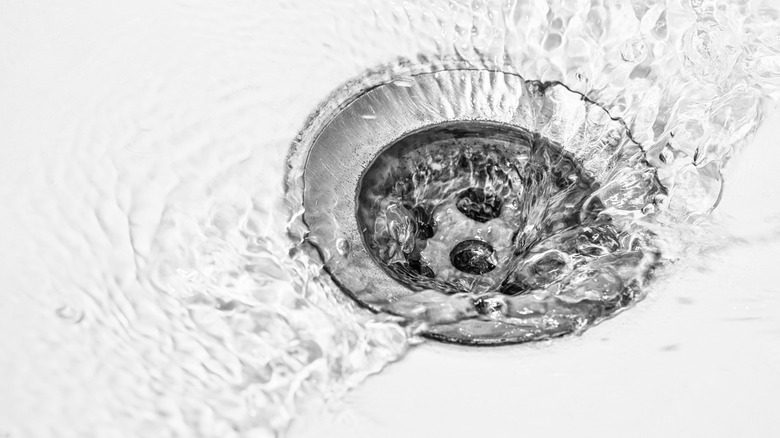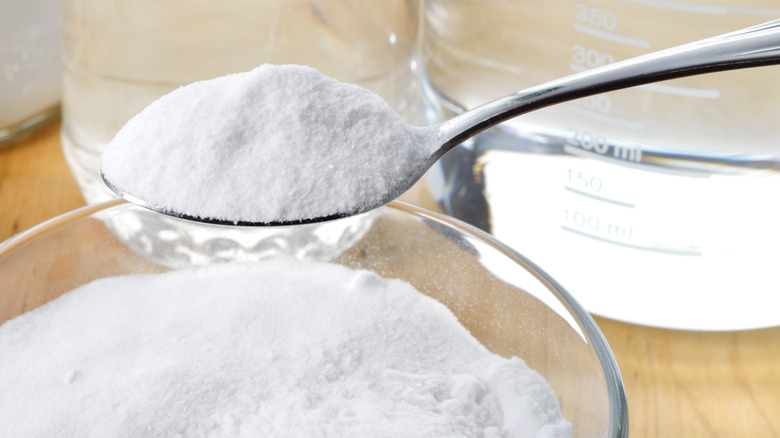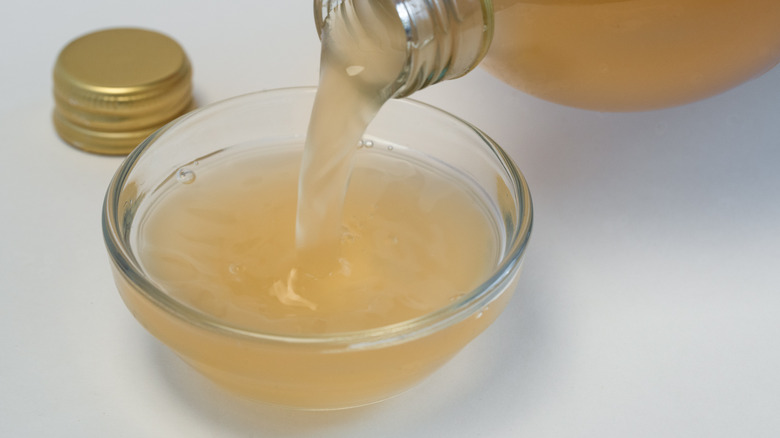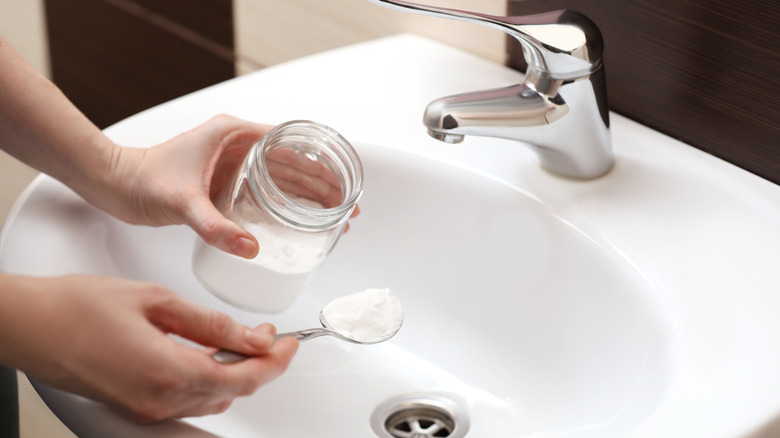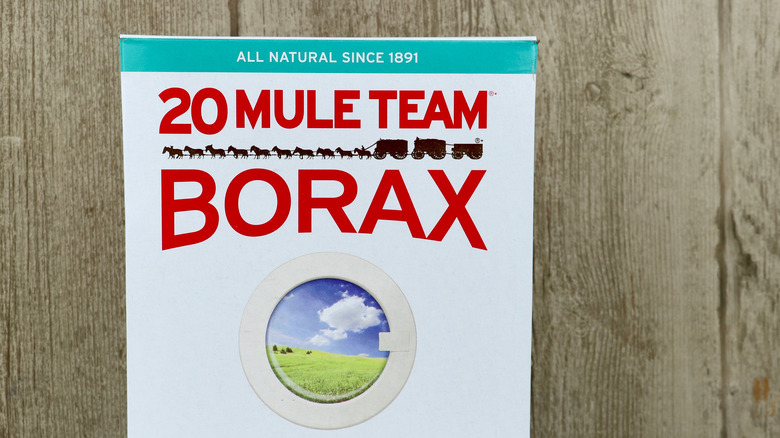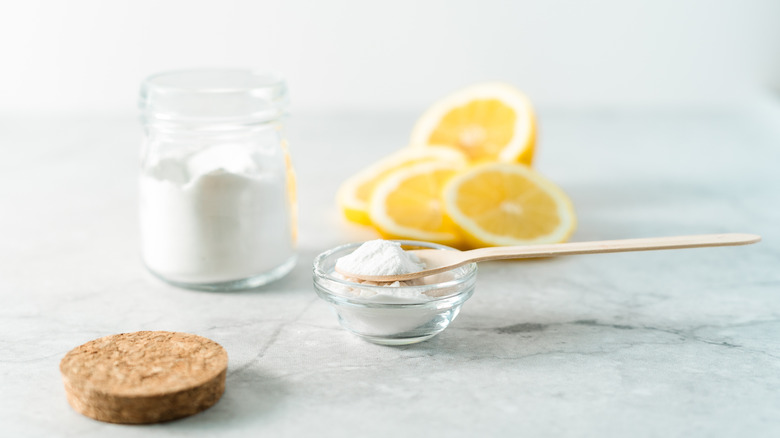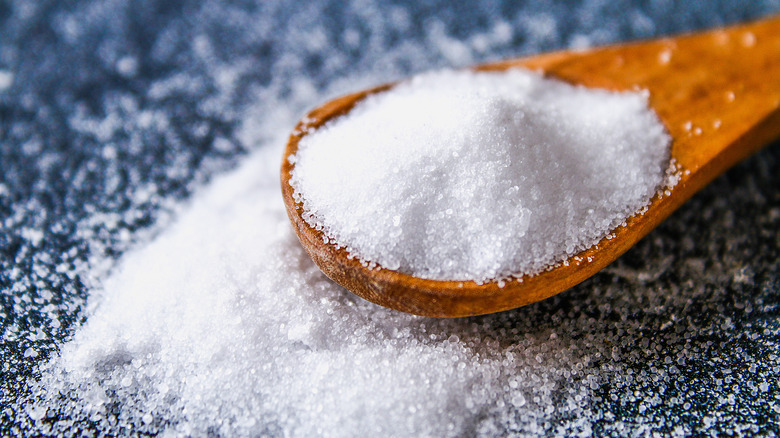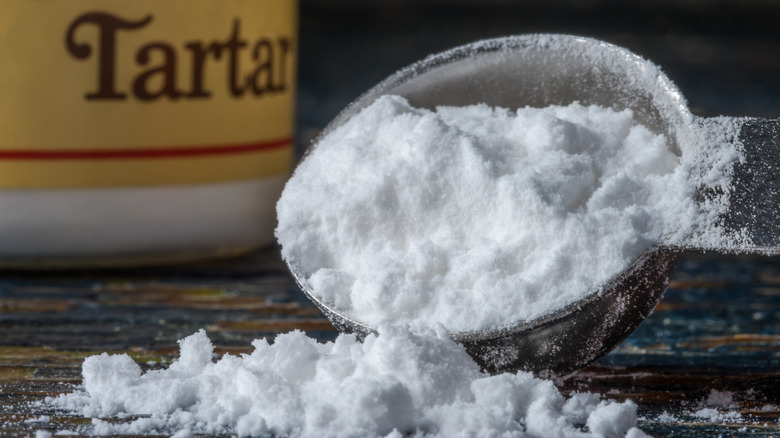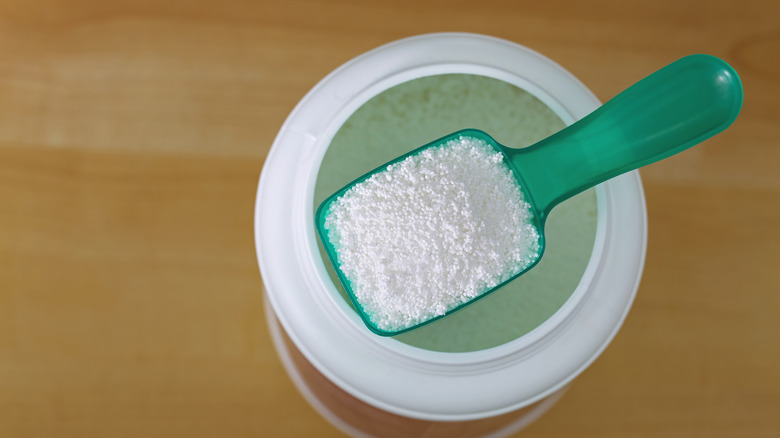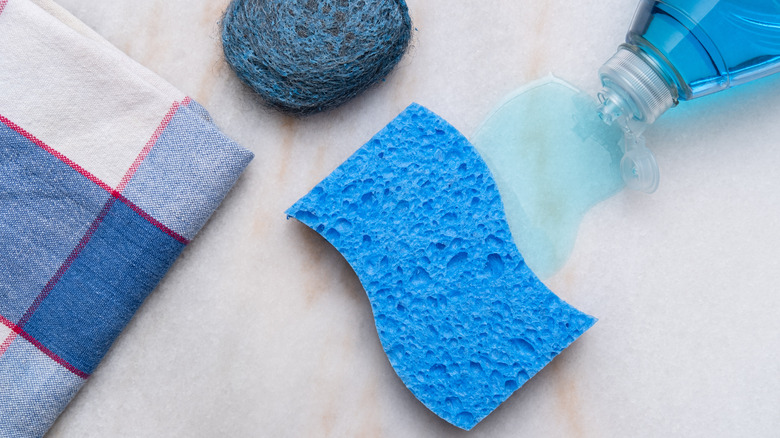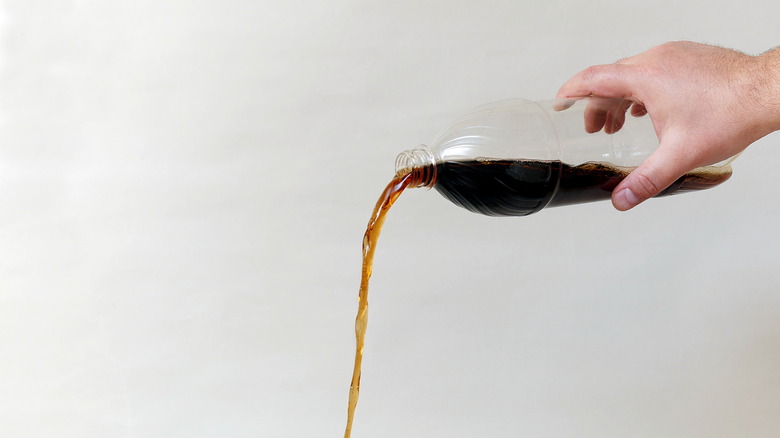How To Make Your Own DIY Drain Cleaner
It's safe to say we've all been in the unfortunate situation where our hands are suddenly found in a backed up sink or our feet are in a rapidly flooding shower floor. It's not a fun feeling and our instinct is usually to either reach for a commercial drain cleaner (which can be detrimental to your pipes) or call the plumber (which can be detrimental to your wallet).
Many store bought drain cleaners contain harsh and potentially harmful chemicals. The most common is sodium hydroxide which is caustic and, according to the CDC, can cause harm by burning the eyes or skin that comes in contact with it. Inhaling the chemical can also cause restrictive breathing among other symptoms, per MedlinePlus. If you have small children or pets in your home, it becomes an even bigger risk to store drain cleaning bottles safely.
So before you grab the stuff from the store or call a professional, give one of these 10 DIY methods a try first. The last one may especially surprise you!
Baking soda and white vinegar
The first DIY method is one of the most common, so you may have heard of it already but may not have put it to use yet. According to Martha Stewart, simply pour 1/2 cup of baking soda down the drain and then follow it up with 1/2 cup of white vinegar. As with many of the subsequent methods, you'll notice a foaming sound and sight as the ingredients get to work. You can opt to cover it and let it sit for a bit before pouring a pot of boiling water in to flush everything down. Feel free to repeat the process for particularly stubborn clogs.
Baking soda and apple cider vinegar
No white vinegar in the house? No problem! You can replicate the previous method using apple cider vinegar instead. Mind Body Green suggests using 1 full cup of apple cider vinegar, or ACV for short, following the 1/2 cup of baking soda. Like the white vinegar, you'll hear and see a foaming action after pouring the ACV. After pouring hot water down the drain, let it sit for a few minutes and then follow up with cold water.
Baking soda, vinegar, and salt
Grove Collaborative takes the above process and adds a slightly coarser element: trusty table salt. Start by combining two parts baking soda and one part salt, then pour the entire mix down your drain. Follow it up with 1 cup of vinegar, let it sit for approximately 20 minutes, then flush with hot water. The table salt is simply an added bonus ingredient that potentially helps to push down the stuff that's stuck in the pipes.
Borax, vinegar, and salt
An alternative to baking soda, Borax has a higher pH level which can make it a more powerful cleaner for your drain, according to Apartment Therapy. HGTV recommends pouring down 1/4 of a cup of salt down the drain, followed by 1/4 of a cup of Borax, 1/2 cup of vinegar, and a full pot of boiling water. After an hour or so, let hot water run from the faucet to fully clear the clog.
Baking soda and lemon
Hate the smell of vinegar? You're in luck because drains can be cleared without it. Per Kitchn, you want to start out by running very hot or pouring boiling water down the drain. Then, gradually add 1 cup of baking soda followed by 1 cup of fresh lemon juice. Cover the drain for 30 minutes and then finish the process just as you started it, by pouring very hot to boiling water down the drain. If the drain is not fully unclogged, you can repeat the steps.
Baking soda and salt
Another two ingredient solution that can easily be found around the house is a combination of baking soda and salt, according to Hunker. Any two to one part mix will work, but they suggest using at least 1 cup of baking soda blended with 1/2 cup of salt to have the maximum cleaning effect. Feel free to leave the mixture in the drain for a handful of hours before rinsing it down with boiling water.
Baking soda, salt, and cream of tartar
Perhaps you bought cream of tartar for baking recipes during the 2020 quarantine but it's been sitting in the pantry ever since. It's time to put it to good use again. Bob Vila advises using a mason jar to shake up 1/2 cup of baking soda, 1/2 cup of salt, and a 1/8 cup of the cream of tartar. This will give you enough for two cleaning sessions, so start by adding half of the mixture into the drain, then immediately pour in 2 cups of boiling water. In an hour, run the regular water to clear any residue.
Washing soda
If you want something a little more heavy duty than baking soda, you can try washing soda. The faucet company, Moen, has a recipe for a homemade version if you're struggling to find it in stores. By pouring 1/2 an inch of baking soda into a dish and baking it in the oven at 400 degrees Fahrenheit for an hour, you have a more powerful cleaner. To clear a drain, start by pouring boiling water followed by a mug full of the washing soda and another mug full of boiling water. Repeat if necessary.
Dishwashing detergent
For greasy clogs, Well + Good suggests using dishwashing liquid or detergent to help free it up. Take 2 tablespoons of the dish soap and add it to a pan of boiling water. Carefully run the mixture down the drain to break up the grease. If you regularly cook with anything fatty or use oils in your skincare routines, this is a process you can do weekly to ensure the build up doesn't, well, build up.
Cola
This last method is certainly the most unusual but it's worth a try, especially if you have extra bottles of soda hanging around the house. One of the main ingredients, phosphoric acid, is what will help cut down on clogs. Hunker advises to pour a room temperature bottle (anything from a 12 ounce to a 2 liter), let it work (anywhere from an hour to overnight), and finalize the process by running boiling water down the drain.
